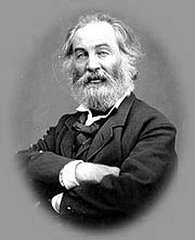Håkan Söderström, is the giant of a man who is the hero of Hernán Diaz’s novel, “In the Distance.” The novel centers on a young Swedish immigrant to the U.S. who after becoming separated from his brother, Linus, arriving in San Francisco rather than New York, heads east to join his brother. The novel takes places sometime between the gold rush of 1849 and the civil war.
Håkan is a huge guy when he arrives and then throughout the novel he keeps growing. He always stands out - first because of his hugeness and secondly because of his limited English, which is compounded by his shyness. He tries to avoid problems/trouble, but cannot. As he travels ever eastward Håkan meets a strange assortment of frontier folks: a crazy Irish gold prospector, a woman with no teeth who keeps him as her plaything, a naturalist seeking life's secrets, a sadistic sheriff and amoral civil war soldiers.
He learns self sufficiency as part of his journey becoming adept at trapping animals and foraging for food. This is partially the result of his having become a wanted man as a result of his having killed men -- something that he was driven by circumstances to do.
In the end our hero is driven to hiding in the wilderness, living in dugout dirt homes, and trapping and foraging for food. Years pass in this manner and Håkan loses himself in the rhythm of fixing his tunnel/house, trapping, picking wild plants, cooking, and doing all the previous over and over again.
The novel was nominated for the Pulitzer and has many parallels in American literature. It is a kind of anti-western, one where, unlike The Virginian or Lonesome Dove, the hero does not triumph in obvious ways, but rather like more of the settlers of the west Håkan triumphs through perseverance. He has his moments of using traditional violence to overcome obstacles, and while these win the day, they also set him back through making him a wanted man.
While for the majority of the novel, like an inverted Huckleberry Finn, he is striking out for New York, yet, in the end he ends up striking out, alone in Alaska to cross the Asian continent back to Sweden.
























